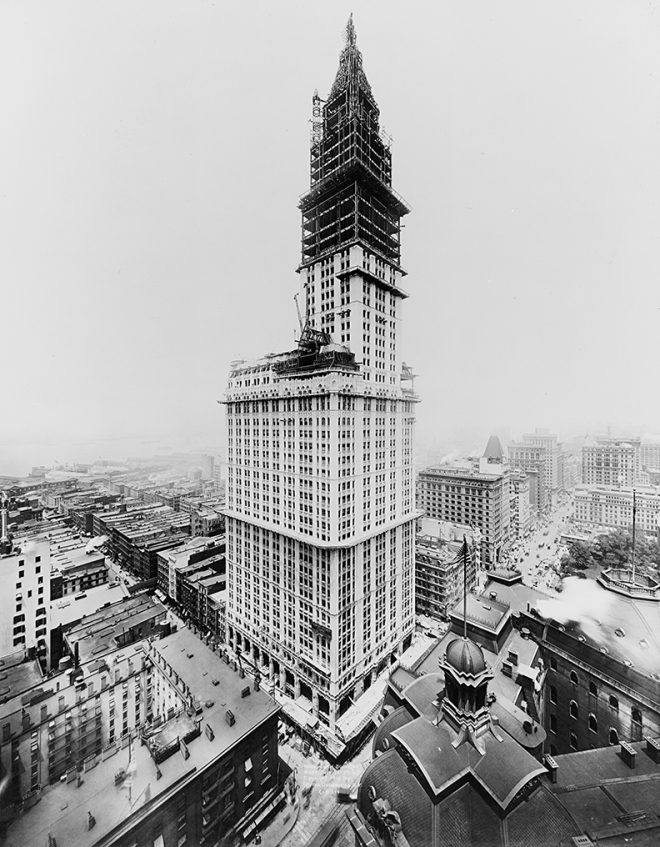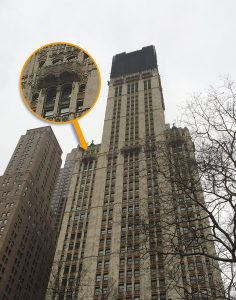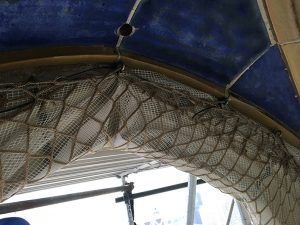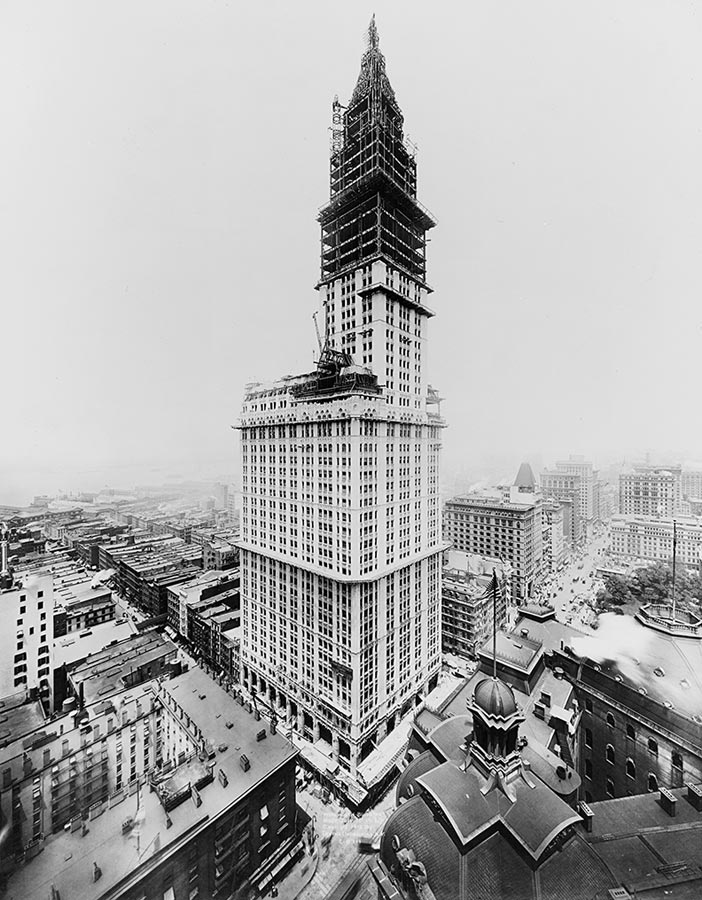
From the time its construction was finalized in 1912, The Woolworth Building in New York City remained the tallest building in the world until 1930, when construction of the Chrysler Building and the Bank of Manhattan Trust Building (40 Wall Street) was completed.
As America’s architectural landmarks age, they face rehabilitation programs which involve tight deadlines and safety plans which need to be quickly implemented. Façade containment netting is a proven solution for situations where façade stabilization is required while a repair plan is carried out. Having recently entered its second century as one of the great marvels of 20th century architecture and construction, The Woolworth Building is once again undergoing repairs and updates to its aging façade.



The usual requirement in a multistory masonry rehabilitation job is to protect the public and property from falling debris while repairs are being carried out. Pucuda-Leading Edge designed a façade safety netting system, which was used to secure terra cotta and cement ornamentation on balconies on the highest floors of The Woolworth Building, while replacement tiles were being fabricated and installed. The process involved a site visit by our lead engineer and a net designer to ascertain the site conditions and test fit a net template, which was then used to manufacture the custom shaped nets which were required for the project.
 In many cases there are considerations which need to be made about using façade netting materials, which will blend visually with the surrounding masonry. It’s not uncommon to have clients who are not only concerned about color matching, but who may specify stainless steel attachment hardware to avoid any possible chemical reactions with the surrounding stone.
In many cases there are considerations which need to be made about using façade netting materials, which will blend visually with the surrounding masonry. It’s not uncommon to have clients who are not only concerned about color matching, but who may specify stainless steel attachment hardware to avoid any possible chemical reactions with the surrounding stone.
Pucuda-Leading Edge has a long history of providing façade protection and public safety netting for historical buildings which are undergoing renovation or repairs. Our safety netting solutions have been used on such notable structures as The FBI building, The U.S. Capitol, The New York Public Library, Grand Central Terminal in New York City and The Washington Monument.

Woolworth Building, July 1, 1912 Irving Underhill, photographer [c1912] Photograph Courtesy of The Library of Congress
Pucuda Leading Edge provides safety netting for fall protection and debris containment netting. They provide assistance to both owners and contractors through consulting, engineering, and installation assistance.








